Galaxy Note 10 Plus vs. Mi Note 10 | Which is Better?
Let the competition begin!
The Mi Note 10 and the Galaxy Note 10 Plus are an odd match-up – comparing a decidedly mid-range phone with a full-fledged flagship does not seem fair. The similarity in their names has nothing to do with the reason we’re comparing the two phones. The upcoming Galaxy S20 will reportedly feature a 108MP primary camera as a part of a multi-module setup – which is a massive upgrade from the 12MP camera setup.

A Quick Comparision
Comparing the two phones will give us a clear picture of how much better the cameras on the S20 will be. First things first, the 108MP camera is not nine times better than a 12MP one. Camera systems are complicated – and since the two cameras come from two different generations of sensors, a direct comparison of area, size, or megapixels is not practical. Regardless, getting the numbers out of the way will help.
The 108MP sensor has roughly three times the area of the 12MP sensor. There are 2.25x more pixels on the Xiaomi Mi Note 10‘s camera. When you combine four adjacent pixels into one, the resulting pixel is about 30% larger than the average pixel on the Galaxy phone. Modern mobile camera systems boast not only stellar hardware, but they also make use of cleverly designed software. Multiple photos are stacked seamlessly in the background, which helps reduce noise, enhance dynamic range, and capture better night shots.
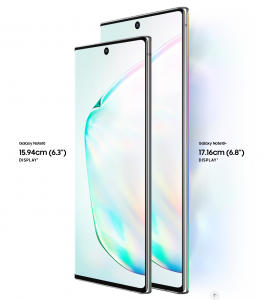
You would guess that a photo by a 108MP camera would be much, much better than a photo captured by a 12MP camera that has been around for several years now. In general, yes, the pictures have more detail; however, the greater detail does not necessarily make the photos better. Let us first look into both the phone’s hardware before drawing any conclusions.
Camera Hardware Overview
Xiaomi’s Mi Note 10 is the first phone to come out with a 108MP primary camera. The camera sensor is an extension of a lineup that comprises of a widely used 48MP model, a 64MP model that’s getting increasingly more popular, and a robust 32MP model primarily utilized in front-facing camera applications. All of these sensors have different sizes, but they work on the same concept – they use a Quad Bayer filter array (and not the Bayer filter).
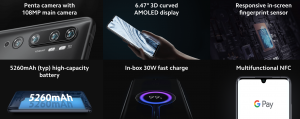
The semantics of why it’s called ‘Quad’ are a bit murky; however, the essence of it is that the filter groups four neighbouring pixels under the same Red, Green or Blue colour filter. The grouping allows the four of them to capture the same primary colour at different exposures.
In this way, a 48MP Quad Bayer sensor ends up capturing a 12MP image that has a better dynamic range, lesser noise, and a little extra detail that the conventional 12MP sensor would capture. Applying the same principles to the 108MP sensor in the Mi Note 10, we get a resultant 27MP image in the default camera mode. The hardware specifics of both the cameras are consequential to the images we capture from the two.
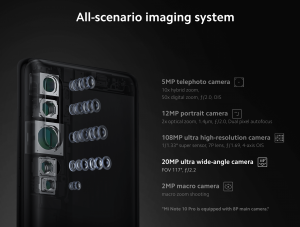
Camera
First up, the Mi Note 10’s primary camera sensor is adequately large – coming in at 1/1.33″, it is the largest camera sensor found on a phone’s camera in modern times. When you couple that with a bright f/1.7 aperture lens, the result is the thinnest depth of field on a phone camera. It can mean different things – either a nicely blurred background in portraits you shoot or a loss of sharpness in the scenes with varying depth. The loss of sharpness is particularly apparent with nearby subjects since the depth of field gets even shallower.
On the other hand, the Galaxy Note 10 Plus features a dual aperture mechanism on its primary camera setup, and hence, can stop down to f/2.4 in a good light. In good lighting, you will get some extra sharpness and extra depth of field in the images you shoot, but the camera is capable of opening up to f/1.5 to gather more light (when the scene calls for it).
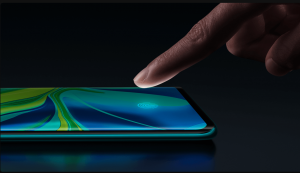
Even though it is a smaller sensor, it is no match the Mi Note 10’s light gathering capability. Technically, the Mi Note 10 should have the edge over the Galaxy phone, on the grounds of sensor size and optics rather than mere resolution. However, looking at the samples themselves before concluding makes it much more apparent why exactly the 108MP camera is better than the 12MP camera.
Daylight Samples
On comparing the daylight samples of both the phones, here are the differences you will notice:
- The Xiaomi phone has resolved the dotted pattern on the balcony blinds. Meanwhile, the Note 10+’s lower resolution camera combined with Samsung’s sharpening algorithms results in a ‘made-up’ rendition of the patterns.
- All 12MP cameras fail at this in one way or another, so the revelation is not shocking by any means.
- The Mi Note 10’s higher resolution benefits in this case.
- There is also finer detail and crispness in the image captured by the Xiaomi phone – and you

Mi Note 10 Vlog and Night Mode will begin to notice some of the details the Samsung phone did not capture.
- The Galaxy Note 10+’s rendition of random detail like the grass looks particularly artificial, while the Mi Note 10 captures a much more natural photo.
- The Mi Note 10’s images could use post-processing tweaks, and a little sharpening and contrast/ adjustment will go a long way and bring some more pop in the photos.
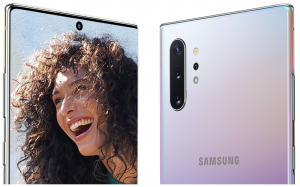
Verdict
The Xiaomi Mi Note 10 offers meaningful resolution benefits over the Galaxy Note 10 Plus; however, the increase in detail is visible when viewing the images up close only. On the other hand, for social media sharing purposes and at standard magnifications, other aspects of the image’s quality take centre stage.

These include colour renditions and HDR processing, which is where the lower resolution Galaxy Note 10 Plus still reigns supreme. The highly anticipated Galaxy S20 will likely feature a 108MP sensor, and it will be interesting to see how well Samsung uses the sensor to bring ultra-high resolution cameras to the mainstream smartphone market.




